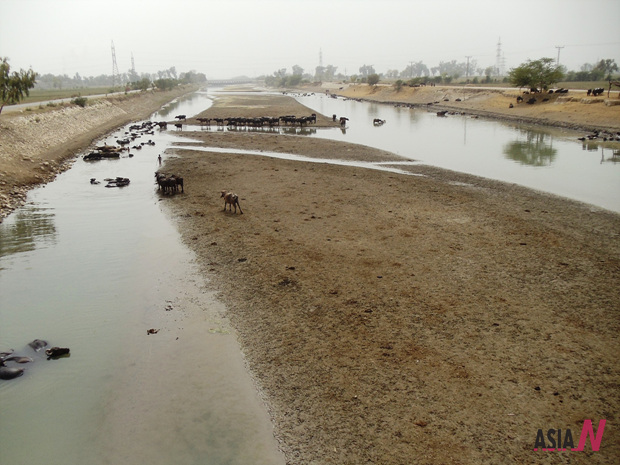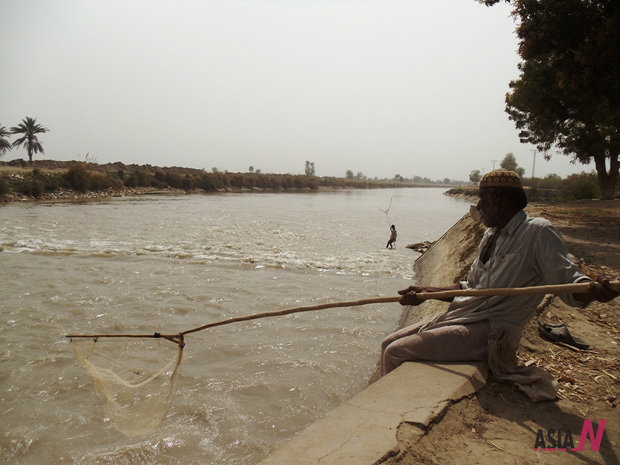Climate change causes water shortage in Pakistan
Two years of deluge and prolonged winter have caused water shortage in Pakistan
The authorities of Southern Sindh province of Pakistan informed the agriculture community a few days back that there would be acute shortage of water in the coming days in the country in general and the province in particular being lower-riparian. In view of such a situation, they also advised the growers to delay sowing of new crops till the situation improves and using the water cautiously while irrigating standing crops.
According to the authorities, the water shortage in country’s rivers was the result of change in climatic conditions this year. As the cold wave still persist in upper parts of the country, consequently, inflows in rivers have reduced considerably due to non-melting or slow melting of snow. The spring in Pakistan begins from Feb. 15 every year but this year it continued up to March with unprecedented heavy snowfall in Northern parts of Pakistan.
Although, the meteorologists and environmentalists expect hot weather during this summer and heavy monsoon rains that usually begin from July, but by that time the water availability situation will have worsened. Surprisingly, the North Pakistan is still in grip of cold wave and the temperature in Southern parts touches 40 degrees centigrade.
The Tarbela and Mangla Reservoirs of two big dams of this country built over Indus River and Jehlum River, located in North and North-East respectively, have reached to their minimum operational levels and now water is available in these reservoirs to compensate inflows. “Due to less inflow, there are apprehensions that water in Sindh Province may reduce to 60 to 70 percent of the allocations,” the authorities said.
The low water discharge in Pakistan’s rivers could be judged from the official data released daily according to which in Indus River at Tarbela the upstream flow was 17400 Cusecs and downstream flow 16800 Cusecs. The upstream flow in Kabul River at Nowshera was 8000 Cusecs and downstream flow 8000 Cusecs. Indus River in Punjab province at Chashma Barrage was flowing 16900 Cusecs upstream and 12600 Cusecs downstream. The Jehlum River of Punjab was flowing at Mangla 15700 Cusecs upstream and 16500 Cusecs downstream. Chenab River of same province was flowing 11800 Cusecs upstream and 6300 Cusecs downstream.
The water flow in Indus River passing through Punjab province was recorded at 20, 000 Cusecs to 16000 Cusecs but while entering into Sindh province the discharge declines drastically, as at first barrage of Sindh- Gudu Barrage the inflow was 19100 Cusecs and outflow was 14500 Cusecs. At second barrage – Sukkur Barrage the inflow was 16700 Cusecs and outflow was only 1000 Cusecs, while the third and last barrage – Kotri Barrage had only 2070 Cusecs inflow and no discharge of water downstream.
Since there is no water for irrigating the fields in Sindh province, having total Area 14.09 million hectare with cultivated area 5.76 million hectare, un-cultivated area 6.27 million hectare, forest area 00.69 million hectare and culture-able waste 1.37 million hectare, has resorted to ‘Rotation’ system under which water is provided area-wise releasing it to some canals and closing the others.
The field officers of irrigation department of Sindh province have been directed to take all necessary measures to tackle the water shortage situation so as to save the standing crops chalking out rotation plan keeping in view the availability of water.
The field officers have also been directed to ensure judicious and equitable distribution of water to all landholders especially at tail-end by controlling theft of water, as fearing the drying up of crops, the growers in upper areas use to break the watercourses diverting the water to their fields and causing the damage to tail-enders.

A heavy machinery lift up sand for using construction purpose at Indus River bed downstream Kotri barrage in Sindh Province. Not a single drop of water is released downstream towards the Arabian Sea, about 250km from here, that has resulted in the emergence of sand dunes in river bed.
Sindh province was devastated first by floods in Indus River in 2010 and again by heavy monsoon rains in 2011. In most parts of some districts the rainwater has not yet dried or drained out even after seven months making the lands unable to be cultivated causing huge economic losses to the agriculturists. Besides, the brackish water of Arabian Sea has re-started intruding after 2010 floods when the Indus River discharged sufficient water into sea for a few months.
According to experts, 10 million acre feet water is needed to be discharged every year into sea to save the lands in coastal areas from its effects. The experts say that 80 acres a day turn barren due to effects of brackish sea water. Since last over two decades hundreds of thousands of acres of land have turned barren in coastal area of Sindh. This has also caused mass migration of communities from those areas for non-availability of water for drinking and irrigation purpose.
The water shortage had also been a major cause of disputes between Punjab and Sindh provinces. Sindh had always suffered being the lower-riparian, as the Punjab diverts river waters for irrigating its lands. The water dispute was resolved through an accord in 1991 fixing the allocations for each province but the violation of that treaty had always been reported. The recent announcement of Sindh government also shows that the province would get 60 to 70 percent less water than the allocation. This situation would again develop dispute among Punjab and Sindh province.
The emerging water crisis could have major implications for Pakistan’s economy and society.
































































Excellent article. Nasir is at his best as usual.
Keep it up.